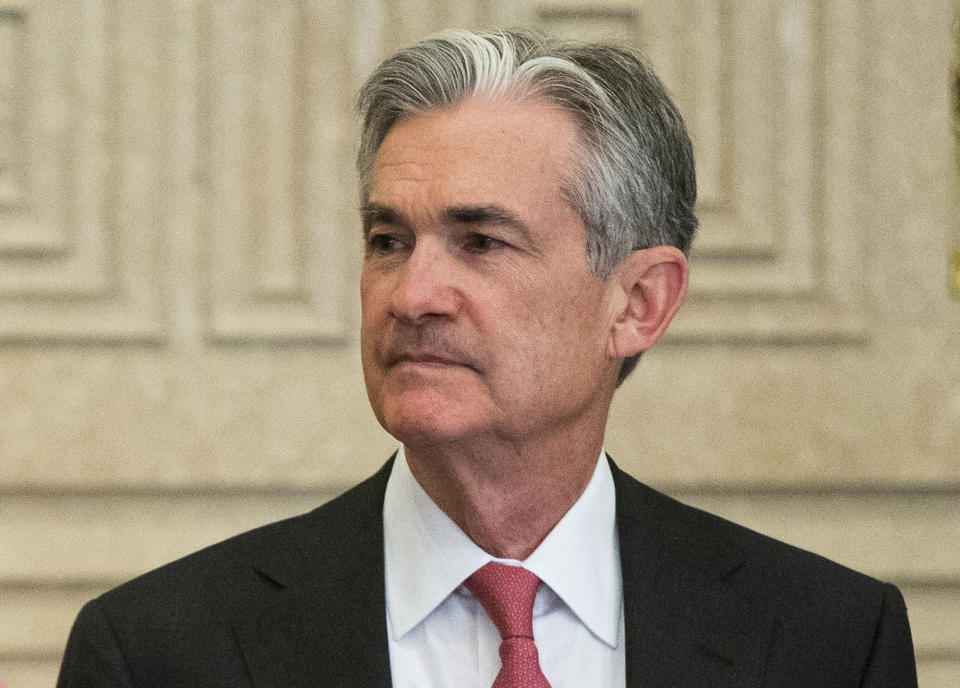Under Armour and consumer confidence — What you need to know on Tuesday
It’s the busiest week of the year.
And Monday started us off with a bang.
Paul Manafort, former campaign manager for then-candidate Donald Trump, was indicted on Monday by the FBI on charges of conspiracy to launder money and making false statements. And in a year of wild political headlines, Monday was perhaps the top.
Stocks also finished the day lower with the small-cap Russell 2000 leading losses, dropping 1.15%.
Reports from Politico and The New York Times on Monday also indicated that President Donald Trump will pick Jerome Powell, a current member of the Federal Reserve’s Board of Governors, to replace Fed Chair Janet Yellen, likely on Thursday.

On Tuesday, investors will likely still be dealing with a flood of headlines from Washington, D.C., as well as economic data and a bunch of big corporate earnings.
The data calendar brings investors the August report on home prices from S&P/Case-Shiller, while the October reading on consumer confidence from The Conference Board and the third quarter reading on the employment cost index is also expected.
On the earnings calendar, headline results Tuesday are expected from Under Armour (UAA), Aetna (AET), Pfizer (PFE), Kellogg (K), and Mastercard (MA).

In markets, investors got good news about consumer spending, though the flip side of this report shows that the personal savings rate is now down to 3.1%, the lowest since 2007.
George Pearkes, a strategist at Bespoke Investment Group, had a great thread on Twitter on Monday morning outlining what factors are pushing household savings down. Without getting too into the weeds, it is effectively the result of corporate and current account surpluses.
Stocks and politics
In 2017, stocks have been on a monster run.
Through the end of Monday’s close, the S&P 500 is up 15%, the Dow is up 18%, and the Nasdaq is up 24% this year. And over the last 12 months, the Dow’s and Nasdaq’s performance is almost a 30% return with the S&P 500 up 20%.
The last year has been, in a word, good for stock investors. In two words, it’s been very good.
But read the headlines of the day and you’re likely to see nothing short of a political food fight (to use Yahoo Finance’s Rick Newman’s phrase) coming out of Washington, D.C.
This has led many to argue that markets are still facing huge amounts of uncertainty and political risk when it comes to any and all directives that may or not come out of the Trump administration. And yet stocks power higher.
In a post on Monday, Bespoke Investment Group compared Trump’s approval rating to the S&P 500. They are going different ways.

“Sure, the President may be unpopular, and based on his approval ratings there’s only a one in three chance that anyone reading this approves of the job he is doing,” Bespoke writes.
“Like him or not, though, never let politics impact your investment decisions. Just as a lot of investors missed out on the bulk of this bull market because they didn’t care for President Obama and his policies, another group of different investors has now likely missed out on another good year for the US equity market just because they don’t care for President Trump.”
This tension between what seems to be the country’s prevailing mood and the stock market’s performance can, however, serve to bolster the argument of some who think the action we’re seeing is a sign of froth, or the later stages of a bull market that is now in its ninth year.
Over at Oppenheimer, John Stoltzfus wrote Monday that given the aforementioned 12-month returns we’ve seen in stocks, some are asking how much longer the run can go.
“If it weren’t for what we see as decidedly improved fundamentals (economic and corporate, both stateside and in the international realm) we’d think that investors might have good reason to be concerned,” Stoltzfus writes.
And Stoltzfus adds that the market’s enduring logic of declaring all good things actually bad things lends credence to the idea that stocks need not stop going up just because some investors think “we’re due” for a correction.
“Ironic as it may seem to some,” Stoltzfus writes, “the concern and worry investors have shown about the markets’ recent gains as well as over most of the past eight and a half years since the market hit a crisis low on March 9, 2009, gives us reason to believe that ‘what’s going on’ may have a good chance to ‘go on’ for some time into the visible future.”
In any case, what happens in Washington, D.C. will likely not help when trying to foresee where markets go next.
—
Myles Udland is a writer at Yahoo Finance. Follow him on Twitter @MylesUdland
Read more from Myles here:


